Mad Hedge Biotech and Healthcare Letter
November 30, 2023
Fiat Lux
Featured Trade:
(A SLEEPER HIT IN THE BIOPHARMA WORLD)
(PFE), (LLY), (VTRS), (BNTX), (SEGN)
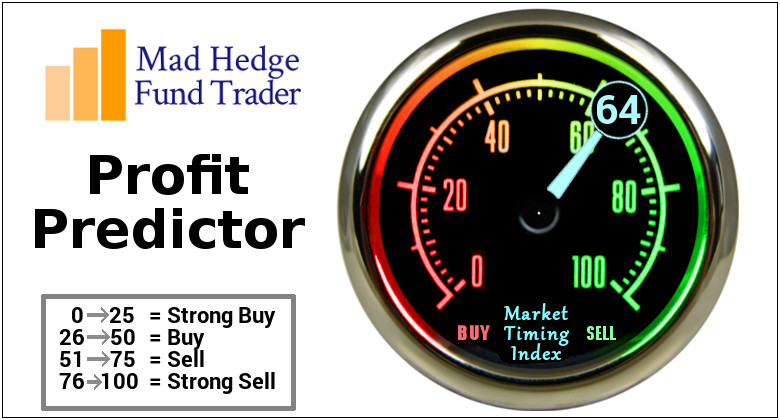
Mad Hedge Biotech and Healthcare Letter
November 30, 2023
Fiat Lux
Featured Trade:
(A SLEEPER HIT IN THE BIOPHARMA WORLD)
(PFE), (LLY), (VTRS), (BNTX), (SEGN)

Eli Lilly's (LLY) recent strides in the weight-loss treatment market have made headlines, especially with Mounjaro, their diabetes drug doubling as a weight-loss medication. The real buzz began when Zepbound, another of Lilly’s offerings, got the green light for weight management.
These developments have propelled Lilly into a potentially profitable orbit, but let's not get carried away just yet. While this company’s stock has been climbing the ladder, partly priced in with the latest news, it's worth casting a wider net.
In the world of pharmaceuticals, opportunities abound, and sometimes the best catches are not the shiniest. Enter Pfizer (PFE), a familiar name that’s been a bit under the weather, stock-wise.
Pfizer's shares have taken a 40% hit this year, a response to the waning demand for their COVID-19 vaccine and treatment.
But let's not forget that we're shifting gears to a post-pandemic era, and such shifts in demand are part of the course. Add to this the impending loss of exclusivity on some of their key products, and you've got a recipe for some financial heartburn.
In 2023, Pfizer’s performance didn’t quite match up to the market, a stark contrast to its 2021 and 2022 glory days, driven by its COVID-19 portfolio. However, looking at Pfizer through the narrow lens of recent performance alone is like judging a book by its last chapter.
Let's rewind a bit. Pfizer took some bold steps in recent years, steps that have shaped its current narrative.
The big move was shedding its consumer health and off-patent drug business, Upjohn, which led to the creation of Viatris (VTRS). The goal? To sharpen focus on innovative pharmaceuticals.
Then came the historic collaboration with BioNTech (BNTX) on a COVID-19 vaccine, marking the first U.S. authorization for an mRNA-based vaccine and bringing in substantial revenue in 2021 and 2022.
Fast forward to 2023, and Pfizer's investment fruits are beginning to ripen. This year alone, it has launched seven new products, from Litfulo for alopecia areata to the RSV vaccine Abrysvo.
Pfizer's non-COVID revenue forecast is promising, projecting up to $84 billion by 2023.
But the plot thickens. Pfizer recently announced a $43 billion acquisition of Seagen (SEGN), an oncology-focused biotech. This isn’t just a new chapter for Pfizer; it’s a whole new book, potentially leading to groundbreaking developments in cancer treatment.
With these in mind, it’s reasonable to believe that Pfizer’s current stock-market blues are but a temporary cloud.
With 83 candidates in development and a robust pipeline, partly fueled by its COVID-19 success, a rebound is on the horizon.
The dividend yield, sitting pretty at 5.5%, along with a decade-long streak of increasing payouts, adds to Pfizer's charm as a long-term investment.
So, investors should see Pfizer’s current price not as a red flag but as a golden ticket – an opportunity to get in on the ground floor before the elevator goes up. Its revenue forecast doesn’t even include its COVID-19 products, which could continue to generate significant revenue, especially during flu season.
Now, back to Eli Lilly. Yes, its revenue has seen double-digit growth recently, and it has been facing the same headwinds as Pfizer. It’s important to note, though, that its valuation makes sense in the context of its current earnings and potential growth. That makes it difficult to truly make a fair comparison at this point.
But, if we're talking opportunity, Pfizer is the one that's looking like a hidden gem. To put it simply, it's all about opportunity cost.
Pfizer, at present, is the underdog with untapped potential. Investing in Pfizer now could mean reaping substantial rewards down the line.
I’m talking about a company with a proven track record, a solid pipeline, and a knack for innovation. And for its current valuation, Pfizer is a deal that's hard to pass up.
For investors willing to play the long game, this could be the moment to seize an opportunity that could pay dividends in the future.
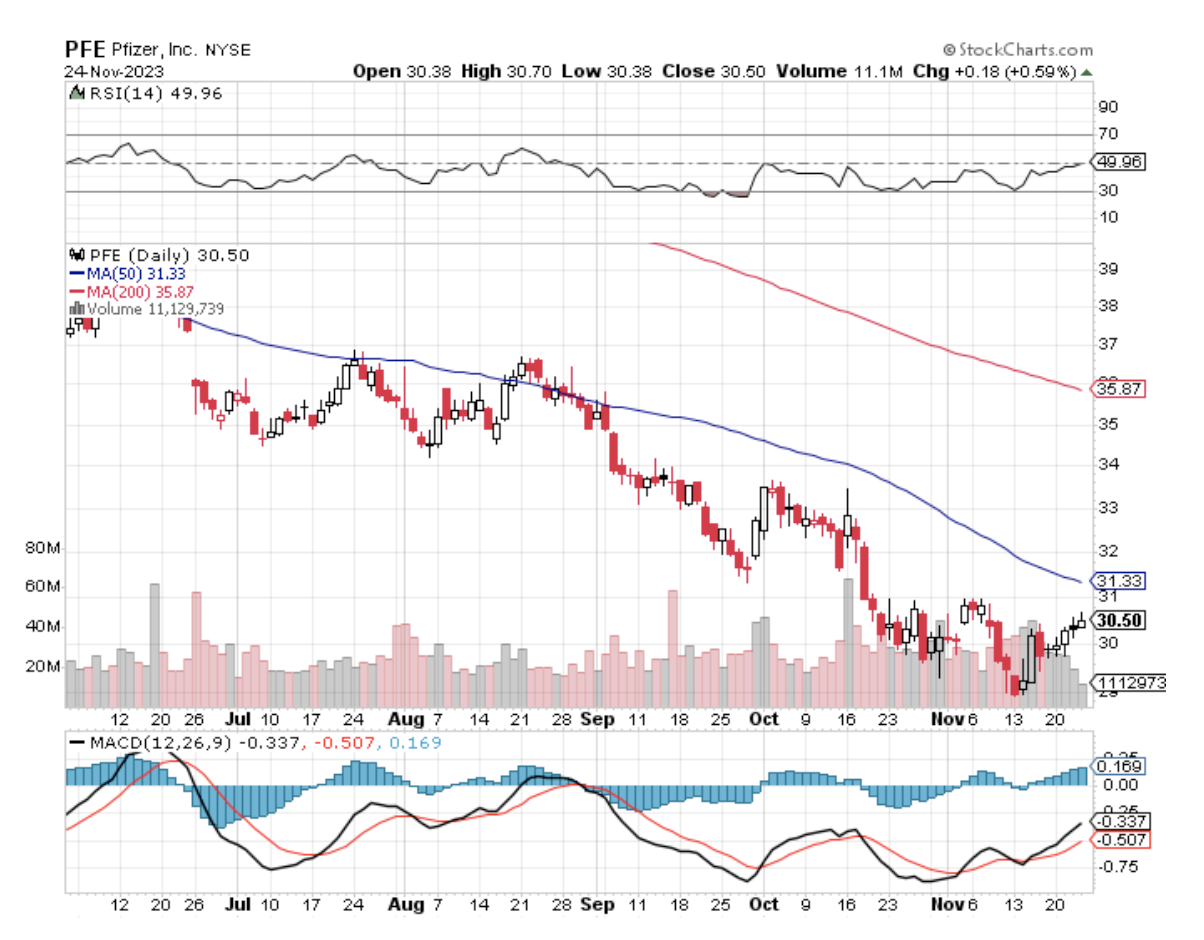
Mad Hedge Biotech and Healthcare Letter
November 21, 2023
Fiat Lux
Featured Trade:
(A PRESCRIPTION FOR CAUTION)
(VTRS), (PFE), (JNJ), (LLY), (BMY), (TEVA), (ABBV), (CVS)

In the rollercoaster world of pharmaceutical stocks, 2023 has been like riding the Cyclone at Coney Island – thrilling for some, nauseating for others.
Take Pfizer (PFE), for instance. It’s seen its stock take a nosedive by 43.4%. That’s the kind of drop that makes you check if your wallet’s still there. Then there’s Johnson & Johnson (JNJ), trailing behind with a 16.4% decline. Not as dramatic, but still enough to make your stomach lurch.
Meanwhile, there’s Eli Lilly (LLY), playing the hero as it rockets up by an extraordinary 66.8%, thanks to its new weight-loss drugs. At this point, investors are practically throwing ticker-tape parades.
However, even with Eli Lilly’s star performance, the S&P 500 Pharmaceuticals index still shows a downturn of 2.3%.
Now, as we've seen earnings reports trickle in, a trend has started to stick out: positive results aren’t shielding drugmakers from a sell-off. Look at Pfizer and Bristol Myers Squibb (BMY), both hovering near their 52-week lows.
Still, investors are giving the biotechnology and healthcare stocks the side-eye for several reasons.
The new Medicare drug-price negotiation program is like a strict parent setting a curfew – it’s potentially restricting pricing power for certain medications. Plus, as interest rates climb, the allure of high dividend yields is diminishing faster than my motivation to hit the gym.
In this skeptical market, however, there are some optimistic investors who are digging through the bargain bin, hoping to strike gold.
Enter Viatris (VTRS), trading at just 3.3 times earnings and boasting a 5.1% dividend yield. It sounds promising, but only a few brave souls are recommending a buy.
Basically, this situation with Viatris is pretty much like finding a designer shirt at a discount store – sure, it’s cheap, but will it fall apart after two washes? Let’s take a closer look.
Viatris’s backstory is a bit of a soap opera. Born from the merger of Mylan and Pfizer's Upjohn unit, it carries the baggage of Mylan's EpiPen pricing scandal.
Since rebranding, Viatris has been trying to find its footing. Despite a shiny new business plan, which involves selling off assets for a potential $9 billion, investor confidence remains shaky at best.
Notably, its decision to exit the biosimilars market, where heavy hitters like Teva Pharmaceutical Industries (TEVA) and AbbVie (ABBV) play ball, has been seen as a bold move. Considering the potential of that market, it felt like leaving a high-stakes poker game just when the chips were starting to stack up. And with CVS Health (CVS) eyeing this lucrative space, Viatris might find itself wishing it had stayed at the table.
These past months, investors have been capturing this drama through a meme – comparing 'adjusted Ebitda' to 'free cash flow' with images of Jennifer Aniston and Iggy Pop. It’s a cheeky way of saying that Viatris’s financial projections might be wearing rose-colored glasses.
Looking ahead, Viatris is aiming for $2.3 billion in free cash flow next year, buoyed by recent sales. But the big question is: can it turn these assets into growth, or will it continue its high-wire act?
Reviewing its recent moves and their effects on the market, the Viatris saga has turned into a cautionary tale for investors in the pharma world – it’s a reminder that sometimes the threat of a nosedive is as real as the thrill of a skyrocket.
So, what’s the takeaway for those of us with skin in the game?
It seems wise to keep our eyes peeled and not jump on any bandwagons too hastily. Viatris, amidst its strategic transformations and market challenges, is worth watching with a careful eye. While its cash flow looks steady through 2027, thanks to planned asset sales, the long-term picture is as clear as mud.
As we navigate the unpredictable waves of the pharmaceutical market this year, let’s remember – it’s not just about holding on for the ride. It’s about knowing when to get on, when to get off, and maybe, just maybe, when to enjoy the view from the sidelines with some popcorn in hand. I say hold off from buying Viatris shares at the moment.
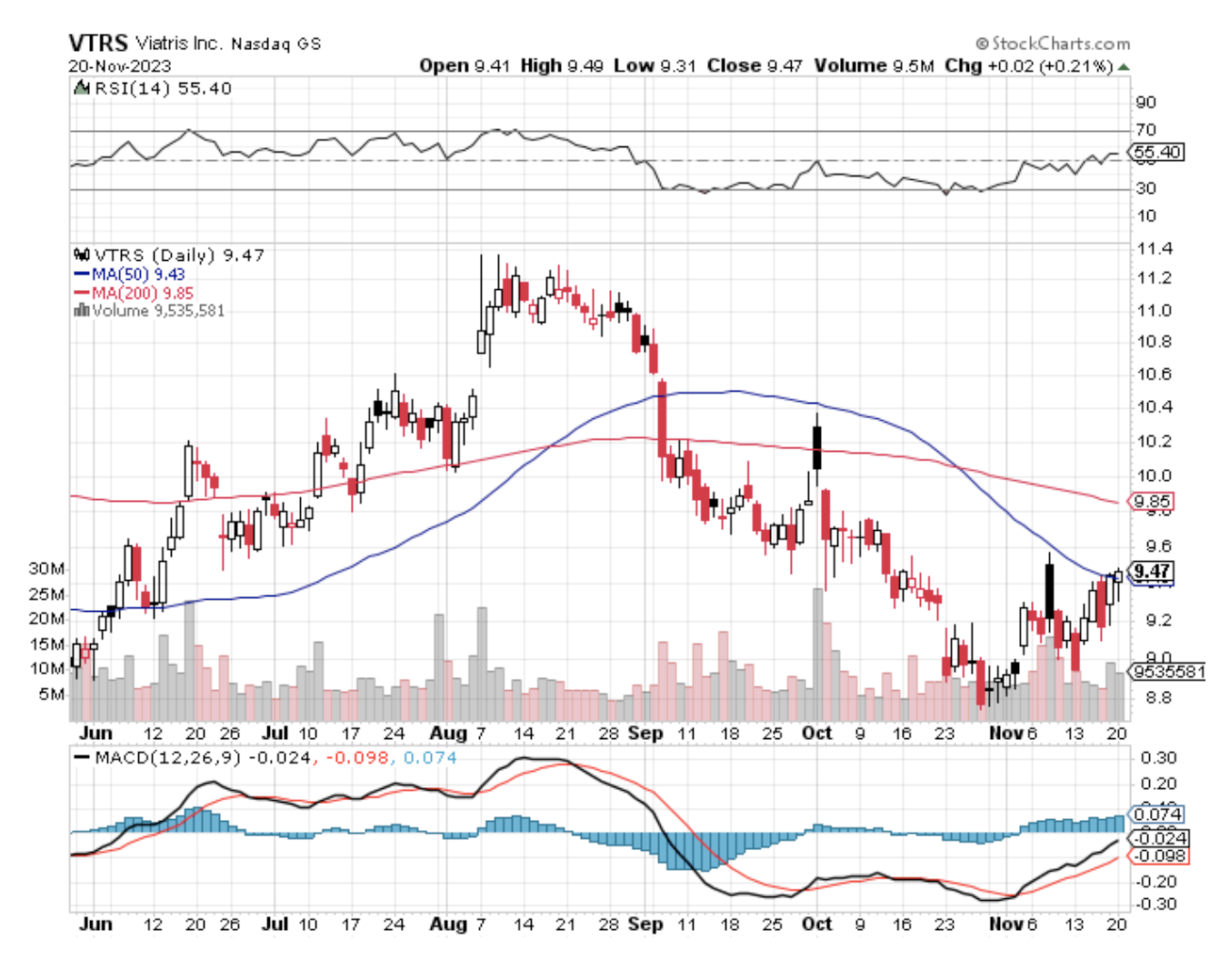
Mad Hedge Biotech and Healthcare Letter
May 23, 2023
Fiat Lux
Featured Trade:
(HUNTING FOR OPPORTUNITIES IN HEALTHCARE STOCKS)
(LLY), (NVO), (VTRS), (OGN), (MRK), (TEVA), (GI), (CNC), (PFE), (GILD), (AMGN)
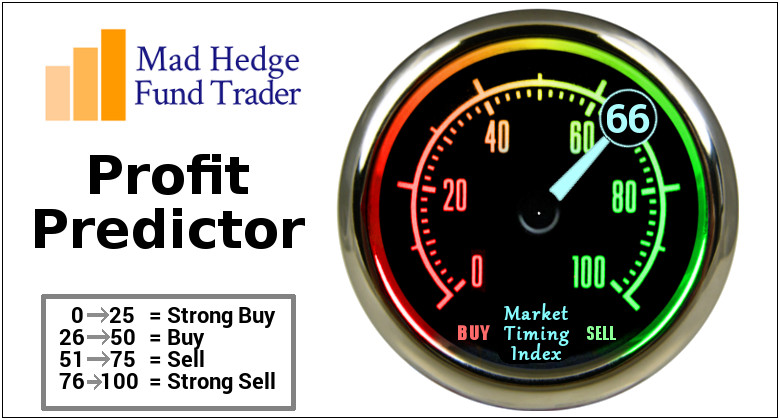
I've been riveted by the healthcare sector's most extravagant stocks lately.
Just look at Eli Lilly (LLY), with its jaw-dropping market value of $412 billion, making it the richest pure-play biopharma company ever. And right on its heels is Novo Nordisk (NVO), boasting a market value of $377 billion. It's enough to make your head spin.
But if you're on the hunt for value, these sky-high prices might leave you feeling a bit queasy. That's why I embarked on a mission to uncover some hidden gems in the healthcare sector.
Now, don't get me wrong. These stocks may be cheap for a reason, and it's crucial to exercise caution. When it comes to investment opportunities, it's essential to separate the diamonds in the rough from the fool's gold.
Enter Viatris (VTRS), a rising star in the generic drug manufacturing arena that has caught the attention of savvy investors seeking long-term holdings. But is it the real deal, or just another flash in the pan?
Viatris shows potential with solid revenue from branded generics like Lipitor, Viagra, and EpiPens. These household-name medicines have a lasting market demand. Plus, its generous 5.2% dividend yield surpasses the market average.
But here's the catch: Viatris is currently undervalued and has yet to prove its growth potential. Its stock price took a hit, and sales in the core generic and branded segments dipped. However, there's hope in the pipeline.
With a range of injectable generic medicines awaiting approval, Viatris could be at the forefront of the market.
By 2027, these programs could yield over $1 billion in annual revenue. While not a game-changer for the company's overall revenue, it sets the stage for future earnings growth.
At this stage, I don’t see Viatris as a slam-dunk investment. However, monitoring their strategic plan to reduce debt, improve efficiency, and drive growth is prudent. It's a work-in-progress worth monitoring for future opportunities.
Another company that caught my attention is Organon (OGN), a recent spinout from Merck (MRK) that focuses on women's health and biosimilars. This hidden gem trades at an attractive valuation of just 4.8 times earnings.
Organon & Co. is a pioneering developer and provider of prescription therapies and medical devices catering to contraception and fertility needs.
The female contraceptive market is projected to experience robust growth, with a compound annual growth rate (CAGR) of 8.5% from 2022 to 2027. Notably, Organon is among the top 5 major corporations addressing the demands in this market segment.
But that's not all.
Organon boasts a diverse portfolio that extends beyond women's health. They also offer biosimilar immunology products, two oncology treatments, hypertension therapies, respiratory solutions, dermatology products, non-opioid pain management pills, and cures for male pattern hair loss.
On its first day of official existence, June 3, 2021, Organon's management proudly announced a lineup of over 60 drug products to enhance female health, along with Merck's (MRK) former biosimilars portfolio.
The biosimilars market is projected to soar to $44.7 billion by 2026, showing an impressive CAGR of 23.5%.
As expected, the biosimilars arena has become a bustling hub with both established and emerging companies eagerly entering the space. For instance, Teva Pharmaceutical Industries Limited (TEVA) has high hopes for its biosimilar drug targeting arthritis treatment, expecting it to boost Teva's revenue significantly.
Organon has already witnessed promising revenue growth from its biosimilar drugs, with a remarkable 17% increase amounting to $116 million.
Several drug sales have experienced a surge of over 30% in the United States, Canada, and Brazil. Moreover, Organon's brands have shown strong performance in China and the Asia Pacific/Japan region.
Investing in women's health is not only a wise choice; it's a strategic move that can yield significant rewards for individual investors and portfolios. With Organon's innovative solutions, broad product portfolio, and forward-thinking approach, it stands out as a compelling opportunity in the market.
Now, let's take a look at some intriguing names that have found their way onto the list.
We have health insurance behemoth Cigna Group (GI), trading at a mere 9.9 times earnings, alongside the health insurer Centene (CNC) at 10.3 times earnings. Not to mention the presence of renowned drugmakers Pfizer (PFE), Gilead Sciences (GILD), and Amgen (AMGN) gracing this list of bargain stocks.
These seemingly cheap healthcare stocks warrant close attention for the savvy investor seeking hidden gems. Sure, the term "cheap" can sometimes be misleading, but within these underappreciated names lies the potential for hidden value waiting to be discovered.
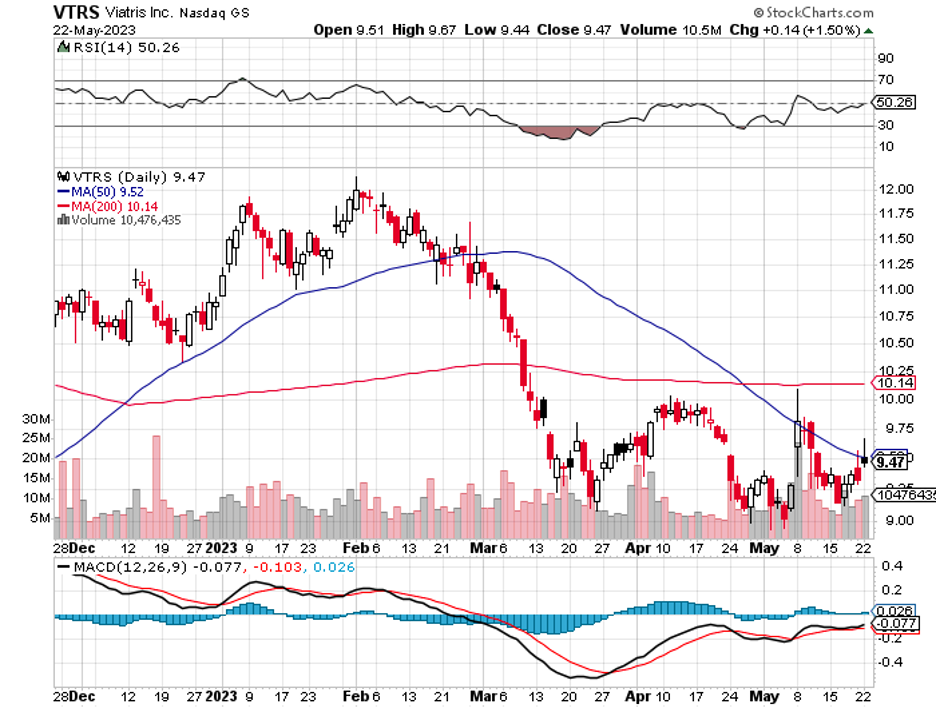
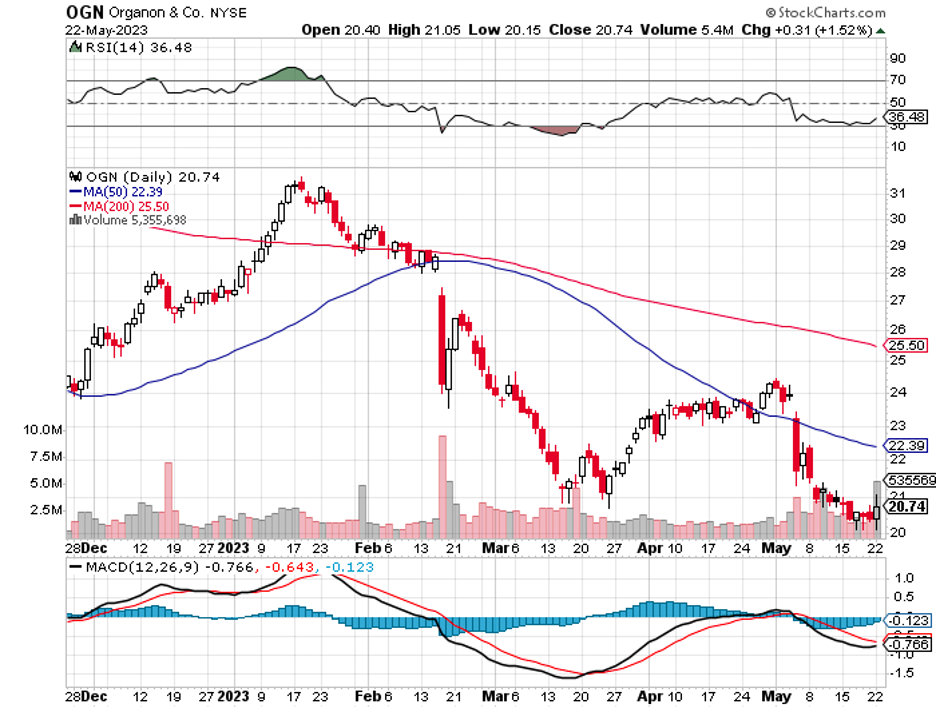
Mad Hedge Biotech and Healthcare Letter
July 14, 2022
Fiat Lux
Featured Trade:
(GOODBYE BIG PHARMA, HELLO BIG BIOTECH)
(GSK), (PFE), (BMY), (VTRS), (LLY), (JNJ), (AMGN), (GILD),
(MRK), (RHHBY), (AZN), (NVO), (ABBV), (SNY), (ABT)
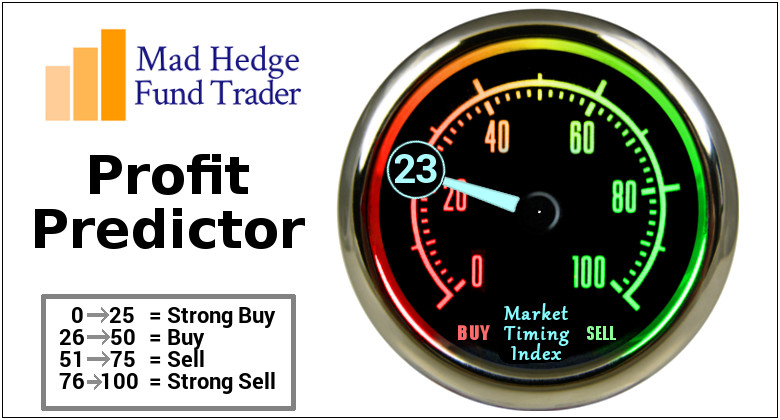
The moment GlaxoSmithKline (GSK) completes the spinoff of its massive segments marketing drugstore staples, such as Tums and Advil, it will become the latest name to join the list of Big Pharmas shuffling their assets and rebranding itself into a pure-play biopharma stock.
The reorganization of this UK-based company is the culmination of years-long process that has transformed practically all the biggest pharmaceutical companies globally into biotechnology companies on steroids.
This type of transformation, which gets rid of sideline businesses, has been going on for years. Pfizer (PFE) dumped its chewing-gum segment back in 2002 and established another spinoff unit, Viatris (VTRS), with Mylan in 2020.
Bristol Myers Squibb (BMY) decided to spinoff its infant-formula division in 2009. In 2018, a new animal health company came to be from Eli Lilly (LLY).
By 2023, Johnson & Johnson (JNJ) expects to complete the creation of a spinoff company and unload its consumer health segment, which offers Tylenol and Band-Aids.
Essentially, they’re turning into Amgen (AMGN) and Gilead Sciences (GILD) but with more money and resources to churn out high-priced, complex treatments for rare diseases.
However, not all Big Pharma names plan to become pure-plays. For example, Merck (MRK) still intends to retain its animal health sector while Roche (RHHBY) wants to keep its diagnostics segment.
As for the rest, including AstraZeneca (AZN), Novo Nordisk (NVO), and AbbVie (ABBV), their plan is to focus on creating new drugs and marketing these treatments—nothing more, nothing less.
The idea of Big Pharma transforming into “Big Biotech” dates back to 1992, when Henri Termeer, the CEO of Genzyme—now owned by Sanofi (SNY)—was summoned to a Senate hearing in Washington to argue and justify one of the most expensive medicines ever put to market.
The medication in question was for a rare genetic condition called Gaucher disease. A year-long treatment for one person needed tens of thousands of human placentas, and the price tag? A jaw-dropping $380,000 annually.
Amid the demand to make the treatment cheaper, Genzyme stood by its decision and the price barely budged after two years.
The company’s tenacity and insistence on standing by its pricing altered the biopharma landscape. That is, drug developers realized that rather than marketing cheaper drugs to combat common diseases, they can focus on biotech-style treatments to target rare conditions.
At that time, Big Pharma companies were battling over pieces of massive markets. They allocated considerable funds to their commercial teams, hoping to outrank one another in crowded spaces.
Meanwhile, biotechs like Genzyme decided on a different strategy.
They concentrated on more innovative approaches. Actually, the biotech focused on biologics at that point. Then, the company simply ignored the pricing rules and set its own prices, which were considerably higher.
A more recent go-to proof of concept for this strategy is Abbott Laboratories (ABT), which was initially a diversified company that offered an extensive range of products like medical devices and even infant formula.
In 2013, the company spun off its branded pharmaceutical sector into AbbVie, which became a pure-play biopharma that focused on developing and marketing the arthritis drug Humira. Since then, Humira has transformed into one of the top-selling drugs in history.
More than that, AbbVie pays substantial dividends while its shares have delivered 500% returns since the spinoff. In comparison, the S&P 500 has returned roughly 220% within the same timeframe.
While this is a shift that investors have clamored to see in the healthcare sector, it also means that the transformations could turn companies with solid revenue streams that have become reliable despite the ups and downs of the drug discovery process into riskier bets.
Although treatments for rare diseases admittedly come with very high price tags, focusing on smaller markets brings with it the inherent risk that these buy-and-stuff-under-the-mattress blue chips could no longer deliver returns as consistently.
These days, though, the advancements have made faster and safer scientific breakthroughs much more plausible.
Companies have gained a better understanding of the human genome, oncology treatments, genetic diseases, and groundbreaking modalities like gene therapies.
The science has now caught up with the demand. More importantly, Big Pharma has finally woken up and started to leverage its resources to take advantage of the opportunities.
This gradual change can be seen in the surge of new treatments in the past years. From 2016 to 2020, the FDA approved an average of 46 new therapies annually.
This is more than half the number between 2006 and 2010 when the organization only approved an average of 22 new treatments every year.
Needless to say, these changes are also partly in response to the overall dissatisfaction of investors with the diversification strategies of Big Pharma.
Basically, the general message here is that Big Pharma should let the investors worry about diversifying their own portfolios and focus on developing safe and effective drugs.
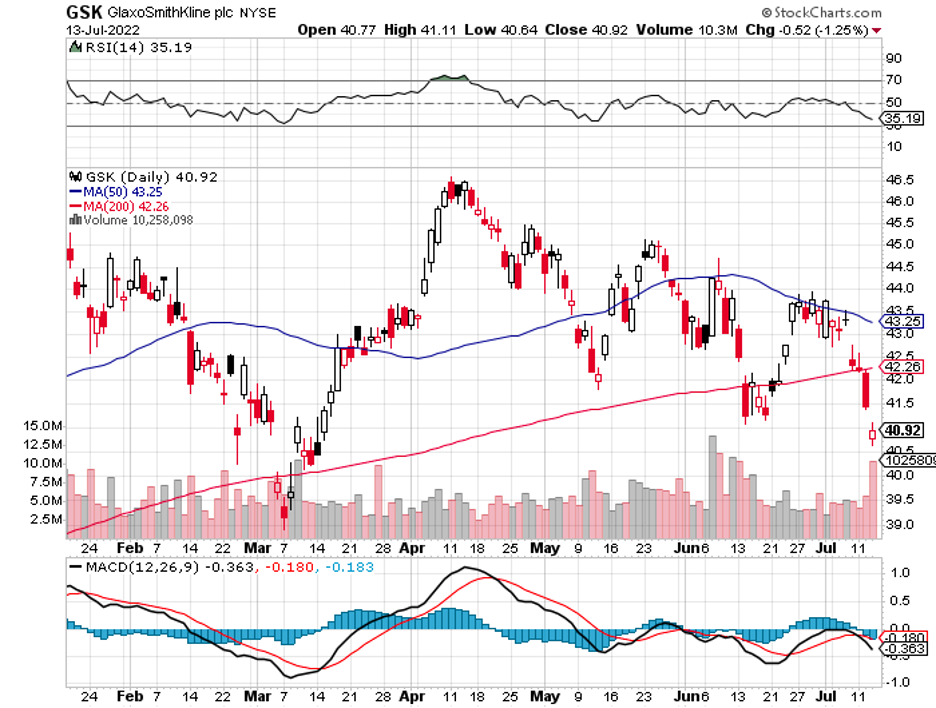
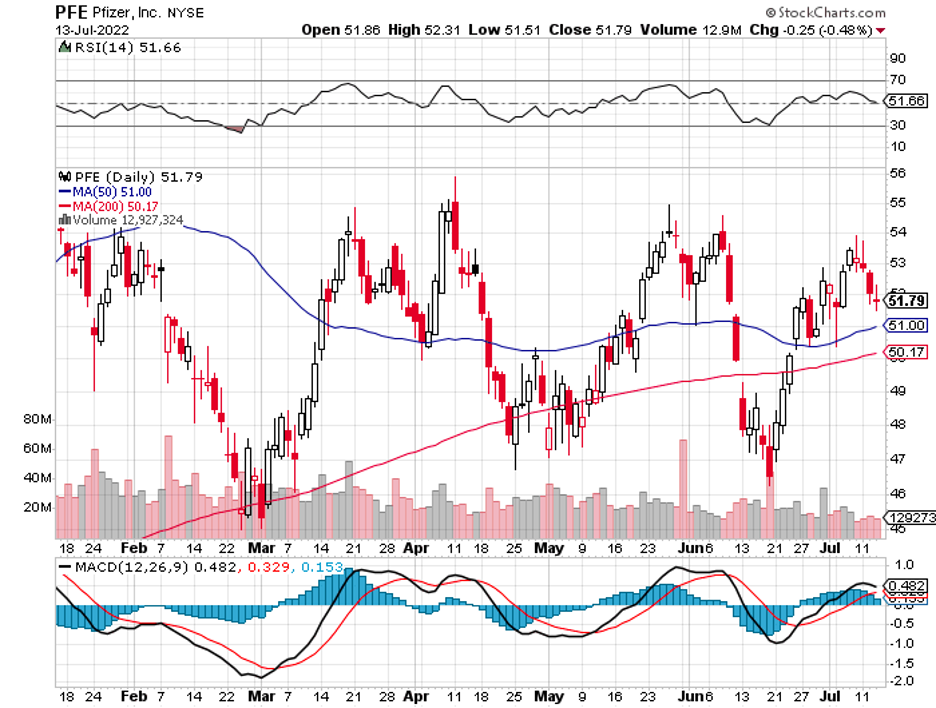
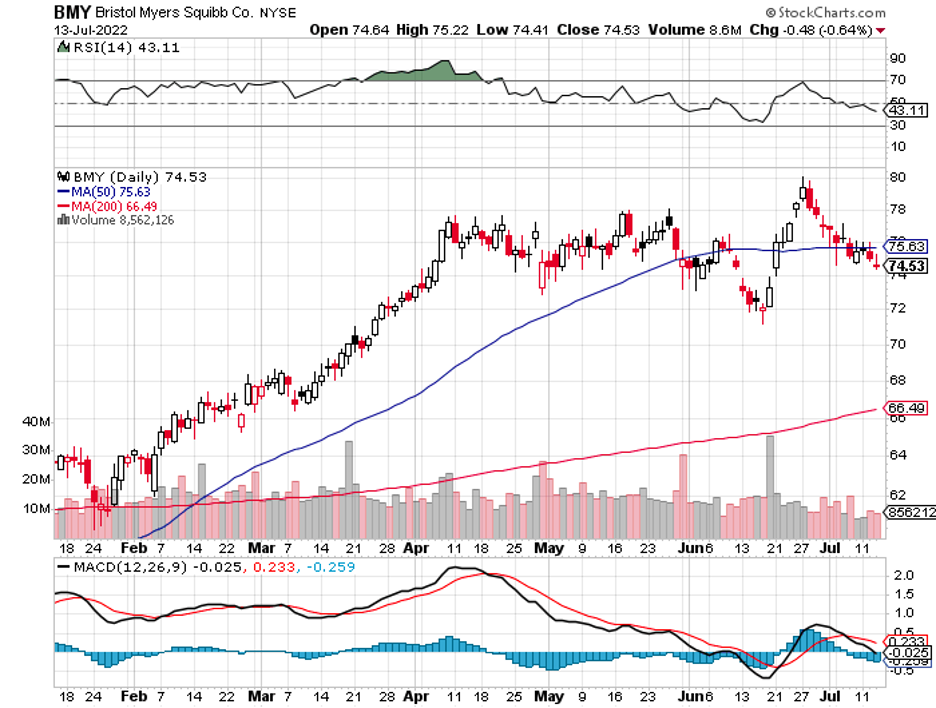
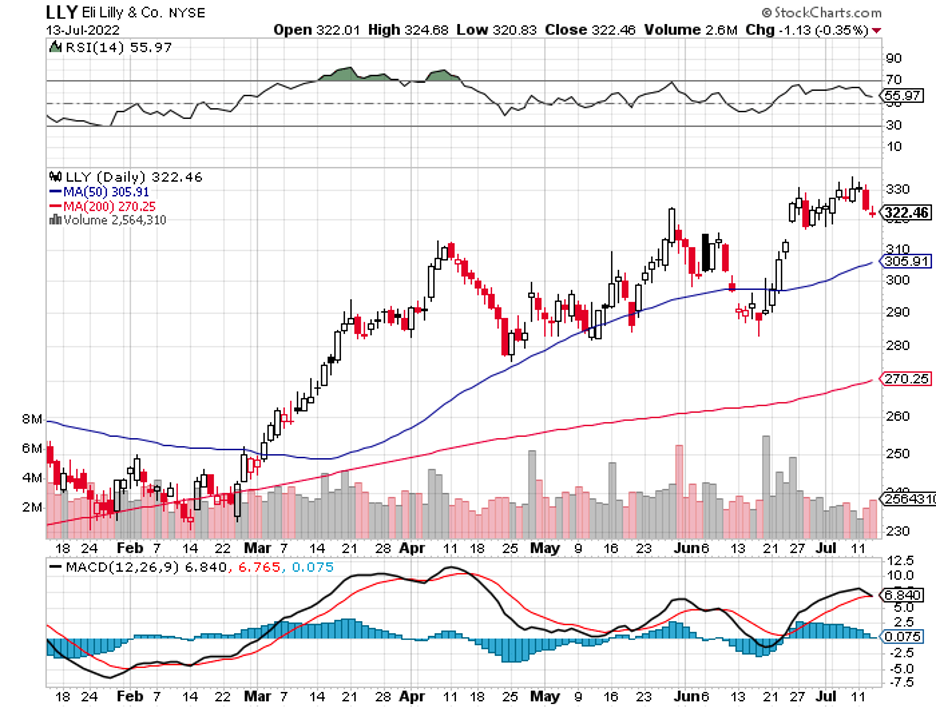
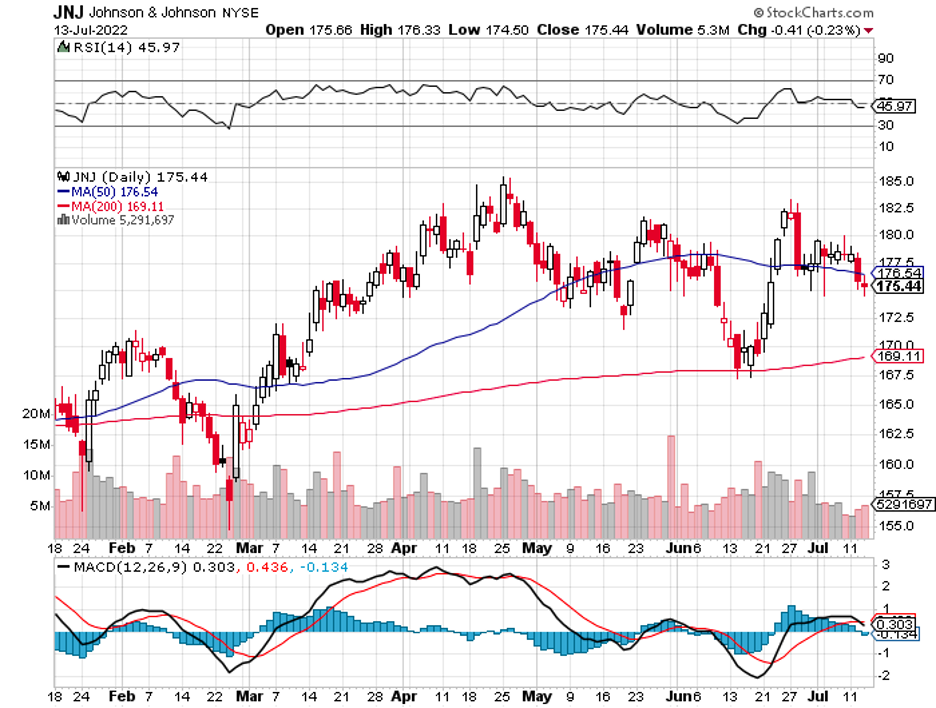
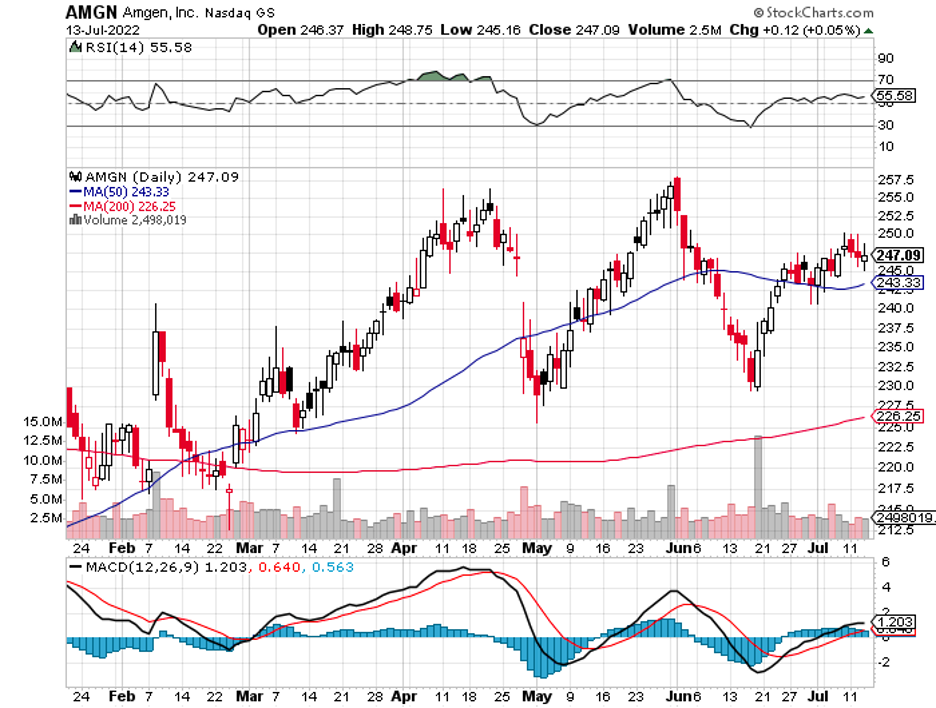
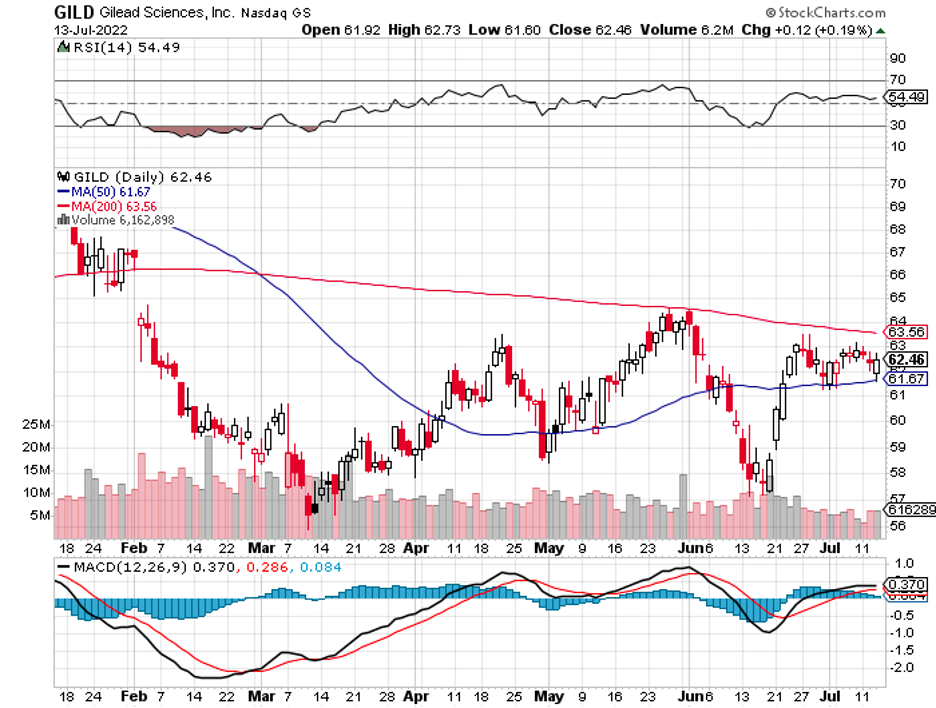
Mad Hedge Biotech and Healthcare Letter
June 16, 2022
Fiat Lux
Featured Trade:
(AN UNDERRATED LONG-TERM BIOPHARMA STOCK)
(OGN), (MRK), (PFE), (VTRS), (ABBV), (JNJ), (AMGN), (RHHBY), (BMY)
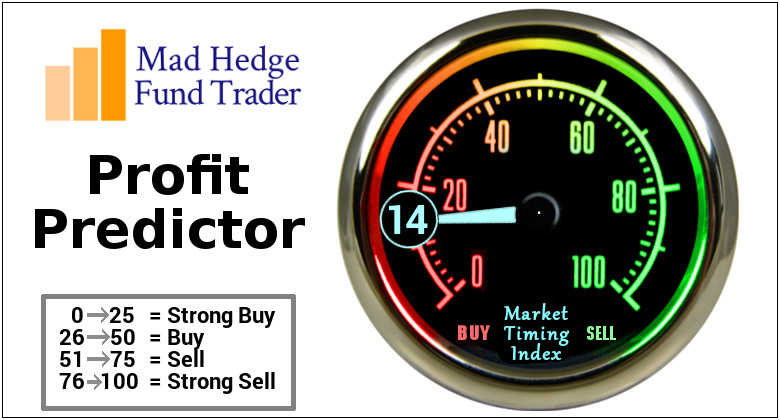
Six months into 2022, the markets are still in turmoil while highly valued stocks rapidly fall.
A way to cope with these is to search for safety and security among value-focused investments that are less at risk of sudden declines.
One business that remains profitable and is trading at a relatively affordable price, especially considering its future earnings multiples, is Organon (OGN).
Organon is a spinoff from Merck (MRK). It focuses on women’s health products, existing treatments, and biosimilars. It was launched roughly the same time Pfizer (PFE) launched its spinoff, Viatris (VTRS), in 2021.
While Organon has yet to become a superstar growth stock at the moment, it’s an excellent business to consider for a stable long-term investment.
So far, the company has managed to generate promising gross margins north of 60% and consistently proved to be profitable.
To date, Organon has over 60 treatments in its pipeline.
Thanks to strategic partnerships, Organon has become the biggest pharmaceutical company centered on women’s health.
Not only that, it has an extensive portfolio of biosimilars or biosimulators focusing on cardiovascular, dermatological, and respiratory conditions.
Meanwhile, Organon has one of the highest dividend yields among biopharma companies at 3.47%, with consistent dividend payments of $0.28 per share every quarter.
Organon’s biosimilar growth received a jumpstart from its agreement with Samsung Boepsis in 2013. The deal enables both companies to develop and market a number of biosimilar treatments focused on cancer and immunology.
Under this partnership, Organon has been granted exclusive license to manufacture, test clinically, and market inflammatory treatments like AbbVie’s (ABBV) top-selling Humira, Johnson & Johnson’s (JNJ) blockbuster Remicade, and Amgen’s (AMGN) moneymaking treatment Enbrel, as well as oncology therapies such as Roche’s (RHHBY) promising growth drivers Avastin and Herceptin.
These catapulted Organon as the leader in the fast-expanding healthcare field, where several lucrative drugs will lose their patent exclusivity before 2030.
Riding this momentum, Organon plans to expand its portfolio of biosimilars to cover more therapeutic fields like neuroscience, diabetes, and even ophthalmology.
To boost its portfolio, Organon has been collaborating with Shanghai’s Henlius Biotech to work on more biosimilars.
The Merck spinoff has agreed to pay $73 million upfront in addition to $30 million in milestone payments for the development of Pertuzumab, a biosimilar for Roche’s breast cancer treatment Perjeta, and Denosumab, a biosimilar of Amgen’s osteoporosis drug Prolia. Another Amgen drug, bone cancer treatment Xgeva, is included in the collaboration agreement.
For context, Amgen reported $873 million in sales for Prolia and $545 million for Xgeva in 2021, while Roche raked in $4 billion from Perjeta.
If this partnership works out, Organon and Henlius plan to move forward with a biosimilar to Bristol Myers Squibb’s (BMY) cancer drug Yervoy and its best-selling Opdivo.
While these are all exciting, it may still take some time for the biosimilars to be released to the market. Among them, the Prolia biosimilar has the most apparent timeline, potentially launching the product by 2024.
Although Organon has yet to make a splash in the biopharmaceutical market, the company holds impressive potential. So far this year, the stock has been up 15%—a performance that’s better than the S&P 500 that recorded 4% in losses over the same period.
More than that, its price is heavily discounted these days, offering investors an extra incentive to seize the opportunity to buy shares of this relatively new company in the healthcare sector.
It also has consistent revenue growth and a promising pipeline of diverse candidates with the potential to expand the company’s portfolio.
Taking all these into consideration makes Organon an underrated buy at the moment and a great candidate for long-term investors.
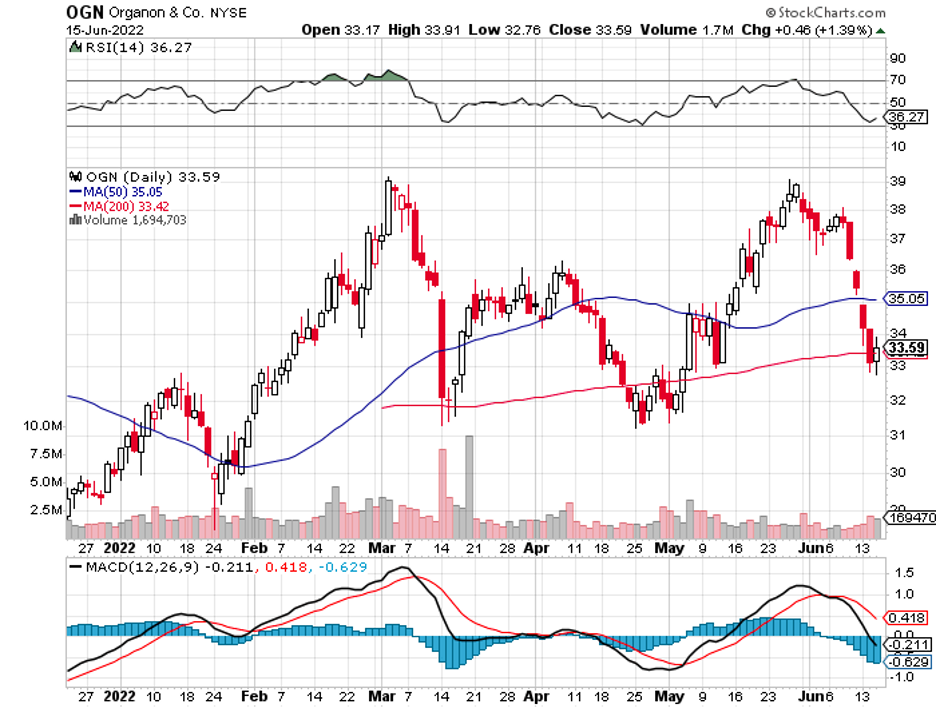
Legal Disclaimer
There is a very high degree of risk involved in trading. Past results are not indicative of future returns. MadHedgeFundTrader.com and all individuals affiliated with this site assume no responsibilities for your trading and investment results. The indicators, strategies, columns, articles and all other features are for educational purposes only and should not be construed as investment advice. Information for futures trading observations are obtained from sources believed to be reliable, but we do not warrant its completeness or accuracy, or warrant any results from the use of the information. Your use of the trading observations is entirely at your own risk and it is your sole responsibility to evaluate the accuracy, completeness and usefulness of the information. You must assess the risk of any trade with your broker and make your own independent decisions regarding any securities mentioned herein. Affiliates of MadHedgeFundTrader.com may have a position or effect transactions in the securities described herein (or options thereon) and/or otherwise employ trading strategies that may be consistent or inconsistent with the provided strategies.
This site uses cookies. By continuing to browse the site, you are agreeing to our use of cookies.
OKLearn moreWe may request cookies to be set on your device. We use cookies to let us know when you visit our websites, how you interact with us, to enrich your user experience, and to customize your relationship with our website.
Click on the different category headings to find out more. You can also change some of your preferences. Note that blocking some types of cookies may impact your experience on our websites and the services we are able to offer.
These cookies are strictly necessary to provide you with services available through our website and to use some of its features.
Because these cookies are strictly necessary to deliver the website, refuseing them will have impact how our site functions. You always can block or delete cookies by changing your browser settings and force blocking all cookies on this website. But this will always prompt you to accept/refuse cookies when revisiting our site.
We fully respect if you want to refuse cookies but to avoid asking you again and again kindly allow us to store a cookie for that. You are free to opt out any time or opt in for other cookies to get a better experience. If you refuse cookies we will remove all set cookies in our domain.
We provide you with a list of stored cookies on your computer in our domain so you can check what we stored. Due to security reasons we are not able to show or modify cookies from other domains. You can check these in your browser security settings.
These cookies collect information that is used either in aggregate form to help us understand how our website is being used or how effective our marketing campaigns are, or to help us customize our website and application for you in order to enhance your experience.
If you do not want that we track your visist to our site you can disable tracking in your browser here:
We also use different external services like Google Webfonts, Google Maps, and external Video providers. Since these providers may collect personal data like your IP address we allow you to block them here. Please be aware that this might heavily reduce the functionality and appearance of our site. Changes will take effect once you reload the page.
Google Webfont Settings:
Google Map Settings:
Vimeo and Youtube video embeds:
